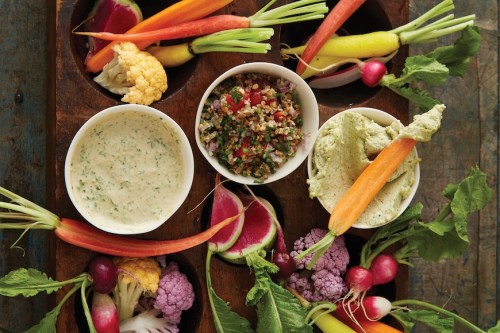You’re trashing the food scraps you should learn to treasure
'Cooking with Scraps' author Lindsay-Jean Hard shares how to reduce food waste


Here’s a sobering fact: an estimated 30 to 40 percent of food in the U.S. goes to waste, according to the United States Department of Agriculture, even as sustainable efforts to reduce food waste become a priority nationwide. Supporting brands that utilize “ugly produce” and shopping at local farmers’ markets cuts down on food waste throughout the supply chain, but eliminating it altogether starts in the kitchen at home.
Overwhelmed at where to start? Lindsay-Jean Hard is here to help. The former Food52 editor’s recently released cookbook, Cooking with Scraps, is full of innovative ways to turn every piece of that orange, carrot, avocado—you name it—into something beautiful and delicious. “There are of course exceptions—like rhubarb leaves—but for the most part, we could be eating most of the produce we buy from root to leaf,” Hard says. “From banana peels to spent coffee grounds, apple cores to leek tops, and pumpkin innards to watermelon rind, there are so many so-called scraps that are delicious, and just as versatile as any other ingredient.”
3 easy ways to start cooking with food scraps
1. Use citrus zest to brighten your meals. “Citrus peels are great candied,” Hard says. “And for the times you don’t feel like doing that, just take a moment to zest citrus fruits before using the flesh or juice.” Citrus peels brighten everything from salads to meat dishes to baked goods. And if you can’t think of anything to do with them right away, the zest freezes well for later use.
2. Use potato peels in bread recipes. Don’t discard your potato skin so fast—they’re packed with fiber and potassium. Hard blends the skins with some of the cooking water to add to a recipe when making bread. Hello, yummy high-fiber snack!
3. Top your toast off with poached broccoli stems. “Broccoli stems are so versatile,” Hard says. “They can be shaved or grated into salads and slaws, sautéed, or grilled.” Try poaching them in olive oil and eating them on ricotta-topped toast. “Cauliflower cores can be used all of those ways, too, but I often prefer to cook them until soft and blend them into something else, like a white bean puree,” she says.
The takeaway, says Hard, is that cooking with scraps should be fun, not stressful. “Pick one scrap, start cooking with it regularly until you’re comfortable with it, and then add in another scrap and keep going,” she says. “Eventually, you’ll start to see them as simply ingredients like any other. And both the planet and your pocketbook will benefit along the way—win-win!”
Here’s how to make a positive environmental impact with what you wear. Plus, more sustainability tips from experts.
Sign Up for Our Daily Newsletter
Get all the latest in wellness, trends, food, fitness, beauty, and more delivered right to your inbox.
Got it, you've been added to our email list.










